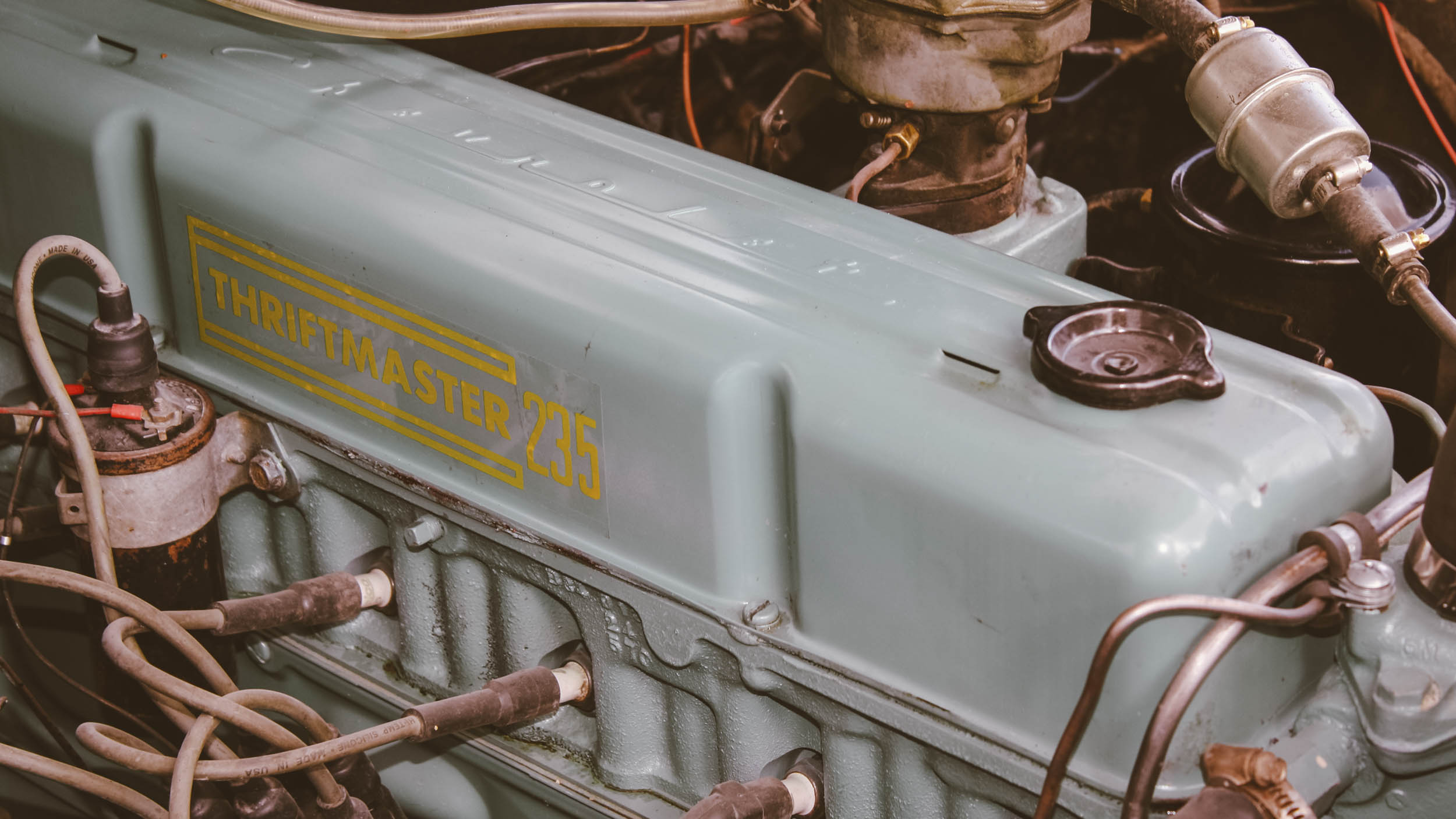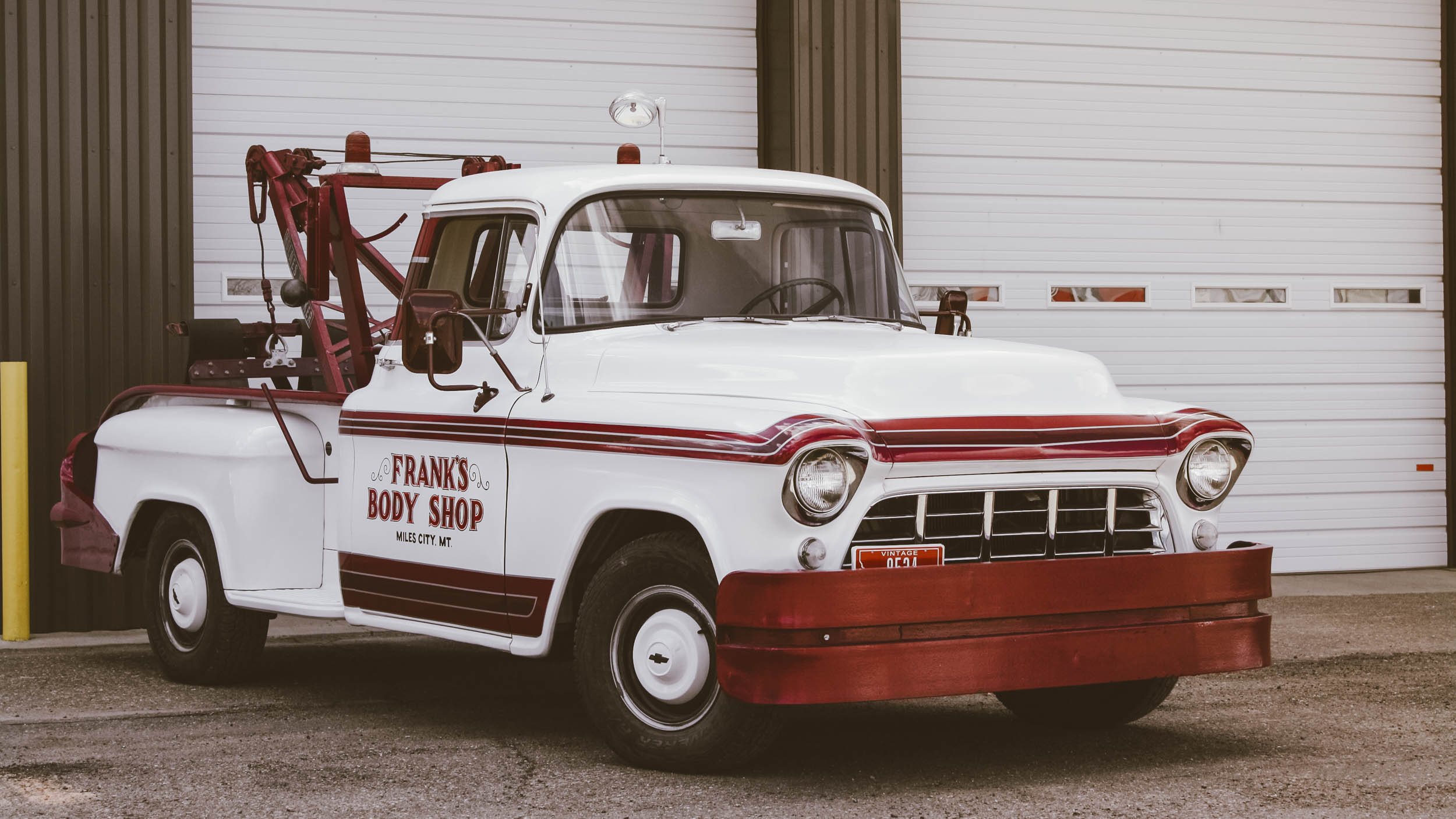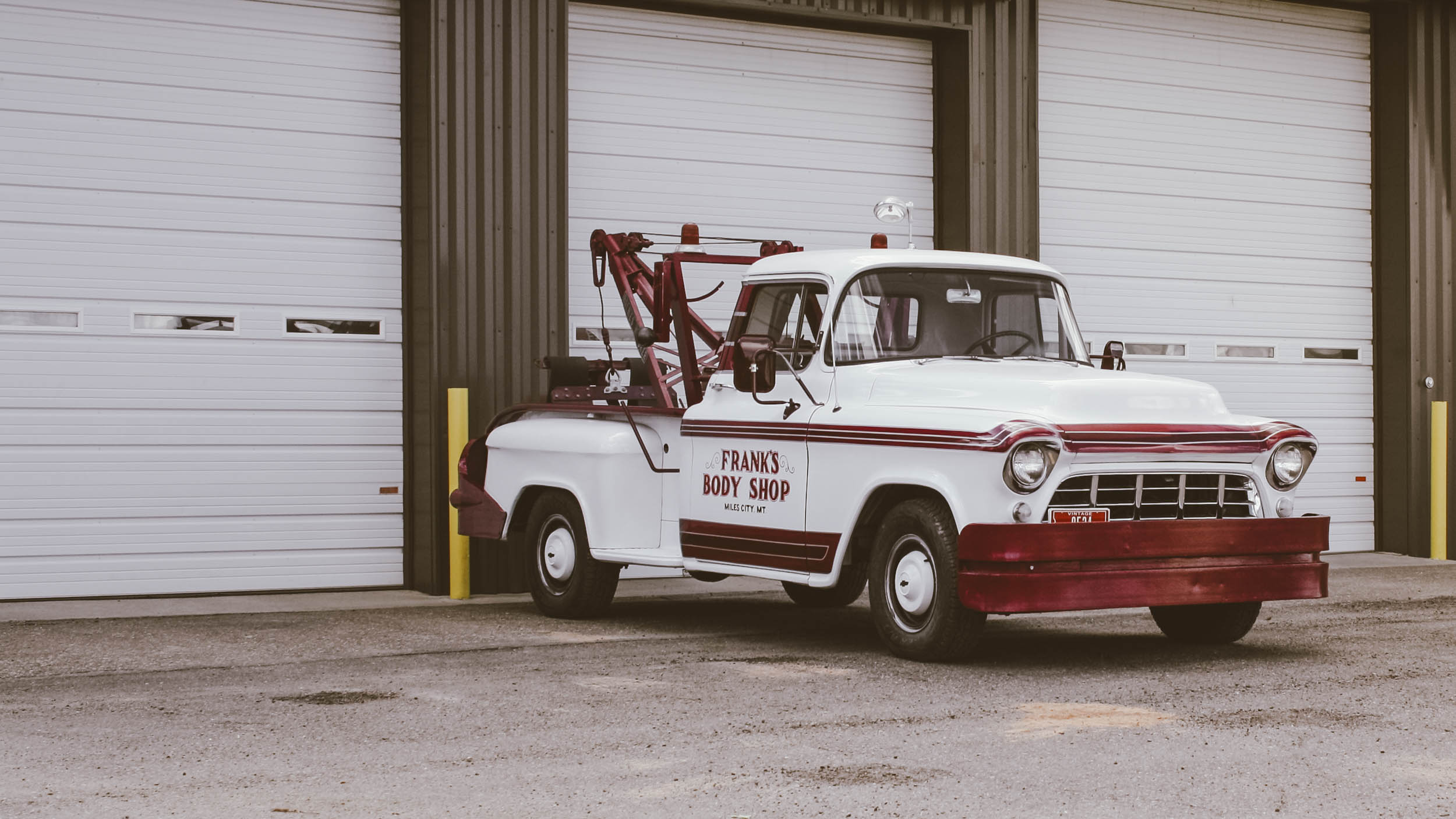This ’55 Chevrolet wrecker is the most loyal employee at Frank’s Body Shop
When Tim Stoltz was just two years old, his father, Frank, opened a body shop. Part of that operation was towing, which led Frank to a 1955 Chevrolet 3/4-ton wrecker. But what started as a work tool over time became something much greater and more special. For this Montana family business, the restored ‘55 is a symbol of six decades of hard work.
Frank moved to Miles City in eastern Montana, a city not far from his hometown of Flasher, North Dakota, in 1946, eventually becoming an apprentice at an auto body shop. He opened Frank’s Body Shop in 1955. Frank, now 94, is no longer involved in the day-to-day operations, but his son Tim developed both a passion and a knack for both body work and towing.
The ’55 Chevy was the first wrecker Frank purchased to tow cars, and he used it regularly for 10–15 years. Tim, who’s been in the business for 45 years, got his start towing with the same ’55 Chevrolet. “I cut my teeth on that one,” he says. “That’s where I got my start [towing].”


Even a passing inspection, to anyone familiar with the Chevrolets of the era, reveals a set of thoughtful custom elements courtesy of the senior Stoltz. The heavy front bumper, used for assisting cars in need of a push start, was a custom piece built by Frank. The rear bumper is also a custom piece and features more style than the purely utilitarian pieces found on most wreckers, vintage or modern. Why? “Frank had an idea and wanted it to look nice,” Tim says.
Perhaps the most notable modification to the body is the curve Frank added to the rear of the bed rails; 1955 Chevrolet pickups came from the factory with a square box, which ended flat with the tailgate. Frank added a gentle curve that joins the rear bumper, creating a look that’s utilitarian and can be operated with expert precision.
“The rail’s curving takes ’em out of the way,” Tim explains. “Makes it easier to work off the bed then.”


Utility boxes were unheard of six decades ago, especially for the do-it-yourselfers in the rural Montana ranching community. Among them, that attitude often persists today.
Frank’s touch is apparent in the bed, where the Holmes 330 single-line unit is mounted. Originally, Tim explains, the 330 was only the central A-shaped support. Frank added the wider upper-support sections and fashioned a pair of swing-out auxiliary brake lights that could be deployed for extra visibility when towing. At the very rear, the sling and support were also added, since the 330 only came with a hook and cable from Holmes.
Mechanically, the ’55 sits pretty much as it did when Frank first bought it. A 235-cubic-inch inline-six sits under the hood and is paired with a four-speed manual floor-shift transmission. The four-speed has a “granny” low gear and three additional forward speeds. To the right of the shifter is the hand brake, and below that on the far right is the foot-actuated starter.
Unlike the previous generation, the 1955 Chevrolet pickup features a 12-volt electrical system instead of a 6V system. Starting is easy, and the 235 settles into a quiet, smooth idle. This engine is dead-simple, with a single accessory belt powering the generator. Everything from the roof-mounted spotlight to the heater and radio works in the truck. (Today, anyway.)


The body shop moved around a few times before settling at its current location. When you have a business to run you don’t always have time for nostalgia, so the ‘55 sat for about 15 years at one point. “I got mad seeing it rust away,” Tim says. “One day I brought it into the shop and started working on it.”
No stranger to body and paint work, Tim meticulously went through the old Chevy and brought it back to the condition that he remembered—probably even better
For the work that he started all those years ago in the ’55 Chevy, Frank was honored as the second inductee into the Montana Tow Truck Association Hall of Fame in 2002. These days Frank’s Body Shop is run entirely by Tim, although Frank still comes down when the weather is nice and strips wire to pass the time.

The shop now is a fair bit bigger than the original two-man operation. The fleet has five trucks, including one heavy-duty wrecker, a medium-duty carrier (flatbed), a medium-duty wrecker, a light-duty carrier, and a light-duty wrecker. But all the modern trucks wear a hot-rodded flame paint scheme over a dark purple base—the same shade of purple that adorned previous body shop trucks and which still accents the ’55.
The continuity was Tim’s idea. As the heir to the shop, he wanted to have something of his own on the trucks while also paying homage to its history. And thanks to Frank and his love of the ‘55, that legacy of hard work is on display for all to see.










